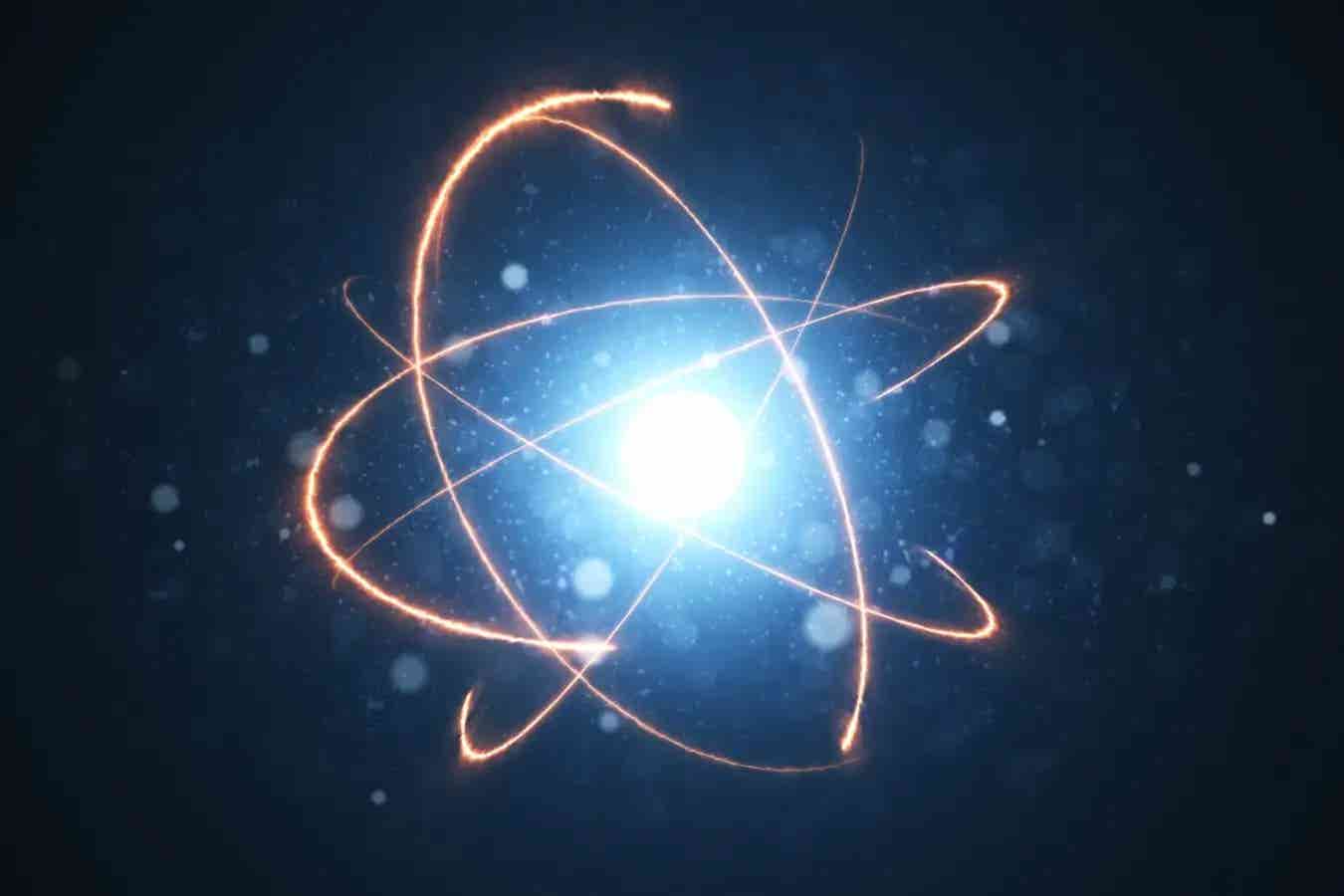Time travel might not break the universe after all
New theory says time loops could erase memory and avoid paradoxes using quantum physics, resetting entropy inside a closed timeline.

A new quantum theory shows that time travel might work—if memory, aging, and entropy reset inside a closed time loop. (CREDIT: CC BY-SA 4.0)
Time travel has long been a topic of science fiction, filled with thrilling possibilities and mind-bending problems. The most famous of these problems is the "grandfather paradox". If someone travels to the past and stops their grandfather from having children, they would prevent their own birth—so how could they have made the trip at all?
Until recently, many physicists believed this kind of paradox made time travel impossible. But new research is challenging that view by exploring what happens when a closed system, like a spaceship, loops back in time. Instead of breaking the laws of physics, it may follow them in surprising ways.
A recent study from Vanderbilt University, led by physicist Lorenzo Gavassino, dives deep into the science of time loops using quantum mechanics, thermodynamics, and general relativity. The results suggest that not only might time travel be logically consistent, but the universe could even reset certain aspects of reality—like memory and aging—inside a time loop.
What Closed Timelike Curves Tell Us About Time
Einstein’s general theory of relativity, finished in 1915, changed how scientists think about time. It showed that space and time form a flexible fabric that can bend and twist depending on the mass and energy around it. One wild result of this is the possibility of closed timelike curves, or CTCs—paths through space-time that loop back to the same point.
If an object follows a CTC, it could end up where—and when—it started. A spaceship flying on such a loop might revisit a moment in its own past. While this may not happen in our universe on a large scale, areas near spinning black holes could allow for these time loops to form.
Physicist Lorenzo Gavassino explored this idea further by studying how a spaceship might behave if it traveled on a CTC in a rotating universe. His study, published in the journal Classical and Quantum Gravity, focused on a specific kind of curve where angular momentum (a kind of rotational energy) drives the journey through time.
Using quantum statistical mechanics, he proved that energy levels inside the spaceship must be finely tuned, locking into specific values. This quantum feature, known as spontaneous discretization, ensures that the spaceship returns to its exact original state after the loop. That includes not just location but also internal systems, like passengers' memories.
This is no ordinary round trip. Once the spaceship completes the loop, everything inside resets to the beginning. That means any change—like aging or forming memories—must disappear. According to Gavassino, “Entropy increase is the reason why we die. What happens when you invert death?”
Related Stories
Entropy: Time’s One-Way Street
Entropy is a measure of disorder in a system. When ice melts, when metal rusts, or when people age, entropy increases. It's the reason we experience time moving forward. In fact, it’s the only physical law that clearly separates the past from the future.
Normally, entropy can only grow. That’s why we remember the past but can’t predict the future. Our brains, cells, and bodies all rely on this growth of entropy to function.
But what happens to entropy in a time loop? Gavassino applied a detailed thermodynamic model to explore this. He showed that if a spaceship is thermally isolated—meaning it doesn't exchange heat with anything outside—it would still follow the rules of entropy, but in a surprising way.
Since a loop must return to its starting point, entropy must also reset. This means that there is a lowest point of entropy somewhere on the curve, and a highest point on the opposite side. If you break the loop into two parts, entropy increases in both directions until it reaches the top. After that, everything reverses.
This reversal flips not just physical processes but also biological ones—like aging and memory. The effect? A person could live forward in one half of the loop and backward in the other. Their story would effectively end at the highest-entropy point, only to begin again in reverse, as though time had split into two mirrored timelines.
In this view, a closed timelike curve isn't just a circle in time—it's more like two entropic arrows pointing from the lowest to the highest point. The same person could exist on both sides but in opposite directions.
No Paradoxes Required
The biggest fear with time travel is the paradox. How can events be consistent if someone changes the past? Gavassino tackles this using a concept from physics called the self-consistency principle. This rule says that if time travel is real, then only histories that are logically consistent can happen. No grandfather-killing allowed.
What’s exciting about Gavassino’s work is that he doesn’t just assume this principle—he derives it using Wigner’s theorem from quantum mechanics. This theorem shows that in quantum systems, the evolution of states must be consistent. That means if you start in one state, evolve through a loop, and come back, the state must match exactly.
He gives a simple example. Imagine Alice flies in the spaceship, carrying a coin and a notebook. One version of her flips the coin and writes "H" for heads. Another version flips the coin and writes "T" for tails. When they meet at the end of the loop, both versions must agree on what’s written. The universe won’t allow contradictions.
In the quantum world, this kind of consistency is automatic. There’s no need for extra rules or strange forces. The evolution of the system takes care of it on its own.
Quantum Fluctuations and Time Loops
One key feature of Gavassino’s model is the role of quantum fluctuations. These tiny changes in energy and position happen at the smallest scales and are usually random. But on a time loop, they take on a new importance.
Fluctuations that would normally increase entropy instead cancel it out. That helps return the system to its original state. This smoothing effect means that no matter how messy things get inside the loop, they must tidy themselves up before the loop closes.
This also supports the eigenstate thermalization hypothesis, which says that large quantum systems naturally evolve toward equilibrium in a predictable way. Even on a time loop, the system must eventually cool back down, erase the mess, and reset to its earlier state.
So if you met your younger self on a time loop, you might not remember it. Your memory could be wiped as entropy resets. And if you tried to change something, it wouldn’t stick. Events must line up in a way that avoids contradiction.
As Gavassino puts it, “Most physicists and philosophers have argued that if time travel exists, nature will always find a way to prevent contradictory situations.”
His work now offers a rigorous proof of that idea, using only accepted principles of physics. There’s no need for extra assumptions or strange loopholes.
Is Time Travel Real?
While this theory opens the door for time loops to make sense, it doesn’t mean time machines are coming soon. Most scientists still believe that CTCs may be blocked by nature.
In fact, Stephen Hawking proposed a “chronology protection conjecture” in 1992. He suggested that the laws of physics prevent time loops from forming, possibly by creating singularities—breakdowns in space-time—whenever a loop tries to appear.
But even if time travel stays theoretical, Gavassino’s work has value. It helps scientists understand entropy, memory, and the behavior of complex systems in extreme conditions.
“What I find interesting about this topic,” Gavassino said, “is the way it forces us to think about the role of entropy in generating our experience of the universe.”
Thinking through these questions helps physicists probe the edges of what’s possible. It also sheds light on real systems, like black holes or subatomic particles, where time may behave in strange ways.
For now, you can’t build a time machine. But if your future self sends you the plans, at least there’s a theory to explain how it all fits together.
Note: The article above provided above by The Brighter Side of News.
Like these kind of feel good stories? Get The Brighter Side of News' newsletter.
Joseph Shavit
Head Science News Writer | Communicating Innovation & Discovery
Based in Los Angeles, Joseph Shavit is an accomplished science journalist, head science news writer and co-founder at The Brighter Side of News, where he translates cutting-edge discoveries into compelling stories for a broad audience. With a strong background spanning science, business, product management, media leadership, and entrepreneurship, Joseph brings a unique perspective to science communication. His expertise allows him to uncover the intersection of technological advancements and market potential, shedding light on how groundbreaking research evolves into transformative products and industries.



